Voicing Classes
NOTE: Click on an instructor's name to see a bio.
The Evolution of the Piano: A Collaboration Across Space and Time
Alan Eder, RPT
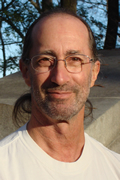 Alan Eder
Alan Eder
Alan Eder, RPT, has published various articles in the Journal and taught at
regional and nation conventions. As the piano technician at CalArts, Alan produced
a video about “Non-Traditional Piano Use” that has become a celebrated
primary reference on the subject for pianists and piano technicians alike.
Join us as we trace the development of the piano, starting with its
antecedents dating back to the beginning of human history and early weaponry,
and consider the contribution of various individuals from different cultures,
continents and centuries. Many audio samples, historical action model
videos, cultural commentary and interactive format!
Measuring (and predicting) Piano Hammer Performance
Del Fandrich, RPT
Del Fandrich, RPT
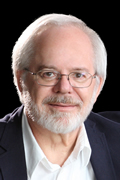 Delwin
D Fandrich, piano designer and builder, has been actively involved in the piano
industry since the early 1960s and an active member of the Piano Technicians
Guild since 1972. Fandrich worked as service manager for Oregon’s largest
Steinway dealer, a position bringing him in contact with a variety of the major
touring concert pianists. Increasingly dissatisfied with the performance of
most new pianos of the time, he began studying piano design and manufacturing
techniques, ultimately becoming Director of Piano Research and Development
for the Baldwin Piano & Organ Company. In 1989 he became America’s
only independent design and manufacturing consultant at the time. He designed
and manufactured the 48” Fandrich Vertical Piano, which was labeled “revolutionary” by
Larry Fine in The Piano Book, third edition. Utilizing his patented soundboard
system, this piano has been called one of the best vertical pianos of its size
ever built. Fandrich has written extensively on the subjects of piano design,
manufacture, and acoustics including a long-running series of articles for
the Piano Technicians Journal, “The Designer’s Notebook.” Fandrich
lectures extensively on piano technology and design topics in the U.S., Europe,
Australia, and China. Over the past two year Fandrich has been working with
Young Chang redesigning their entire product line and refining their manufacturing
systems to improve build quality and performance consistency. Fandrich also
designs and remanufactures pianos at his plant in Centralia, Washington. www.fandrichpiano.com
Delwin
D Fandrich, piano designer and builder, has been actively involved in the piano
industry since the early 1960s and an active member of the Piano Technicians
Guild since 1972. Fandrich worked as service manager for Oregon’s largest
Steinway dealer, a position bringing him in contact with a variety of the major
touring concert pianists. Increasingly dissatisfied with the performance of
most new pianos of the time, he began studying piano design and manufacturing
techniques, ultimately becoming Director of Piano Research and Development
for the Baldwin Piano & Organ Company. In 1989 he became America’s
only independent design and manufacturing consultant at the time. He designed
and manufactured the 48” Fandrich Vertical Piano, which was labeled “revolutionary” by
Larry Fine in The Piano Book, third edition. Utilizing his patented soundboard
system, this piano has been called one of the best vertical pianos of its size
ever built. Fandrich has written extensively on the subjects of piano design,
manufacture, and acoustics including a long-running series of articles for
the Piano Technicians Journal, “The Designer’s Notebook.” Fandrich
lectures extensively on piano technology and design topics in the U.S., Europe,
Australia, and China. Over the past two year Fandrich has been working with
Young Chang redesigning their entire product line and refining their manufacturing
systems to improve build quality and performance consistency. Fandrich also
designs and remanufactures pianos at his plant in Centralia, Washington. www.fandrichpiano.com
This class introduces a method of measuring the hardness and resilience of piano hammers. A newly developed tool is used to monitor production and predict hammer performance with more precision than words like “warm” or “bright.” FFT spectrum analysis is used to illustrate the tone envelope produced by different hammer types.
The Reintroduction, Making & Voicing of the
Ronsen "Weickert
Special"
Felt Hammer
A two period class with the Ronsen team
Dale Erwin, Ray Negron, Jack Brand and Starr Taylor, RPT
Ray Negron - Ronsen Piano Hammer Co.
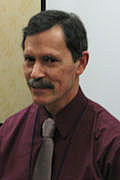 Ray
is a second generation piano hammer maker, following in the footsteps of his
father, Marty Negron, who was co-founder of Ronsen Piano Hammer Co. as well
as former manager at Pfriemer Piano Hammer Co. Ray started working summers
at Ronsen in 1961, and has been working full time since 1971, becoming company
president in 1983. Ray is always looking to learn more about piano hammers,
and enjoys talking with piano technicians regarding hammers, but will always
find time for a conversation about baseball. www.ronsen-hammer.com
Ray
is a second generation piano hammer maker, following in the footsteps of his
father, Marty Negron, who was co-founder of Ronsen Piano Hammer Co. as well
as former manager at Pfriemer Piano Hammer Co. Ray started working summers
at Ronsen in 1961, and has been working full time since 1971, becoming company
president in 1983. Ray is always looking to learn more about piano hammers,
and enjoys talking with piano technicians regarding hammers, but will always
find time for a conversation about baseball. www.ronsen-hammer.com
Dale Erwin, RPT
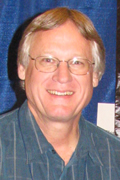 Dale is a second-generation piano technician. His father, Harold, received training
from the venerable William Braid White in 1950. Belonging to a deeply musical
family prepared Dale for a career in custom piano restoration and rebuilding.
His wife Trix and son Dennis work together with Dale at the family business,
Erwin's Piano Restorations in Modesto, California.
Dale is a second-generation piano technician. His father, Harold, received training
from the venerable William Braid White in 1950. Belonging to a deeply musical
family prepared Dale for a career in custom piano restoration and rebuilding.
His wife Trix and son Dennis work together with Dale at the family business,
Erwin's Piano Restorations in Modesto, California.
Although he started out as a field technician for his dad's Yamaha franchise,
his passion for creating his own sound and touch took him out of the field
and into the shop full time. His 35-year journey has been one of incredible
discovery, high enthusiasm and rich experience -- both personal and musical
-- and a steep, constant learning curve, in pursuit of what he terms the "golden
piano tone".
His newest ventures are building soundboard panels and pinblocks for the
trade, as well as
being a Ronsen sales & technical rep. His trademark soundboard design,
the "variable radius" soundboard, has been displayed and heard at
conventions since the early1990s, including Rochester 2006 and
Anaheim 2008.
Jack Brand - Wurzen Felt Company
 Jack
is a master felt maker in his own rite. His family owns three felt factories,
including the Wurzen Felt Co., Germany, formerly the legendary J.D Weickert
felt factory. This factory is the oldest felt making facility in the world.
The hammer felts and other felts are produced combining Jack's vast expertise
with original J.D. Weickert felt formulas passed on to him in 1992 when the
family purchased the plant in Wurzen. Jack's passion is making piano felts,
especially hammer top felt. He is the piano technician's best ally and is ever
trying to improve the product.
Jack
is a master felt maker in his own rite. His family owns three felt factories,
including the Wurzen Felt Co., Germany, formerly the legendary J.D Weickert
felt factory. This factory is the oldest felt making facility in the world.
The hammer felts and other felts are produced combining Jack's vast expertise
with original J.D. Weickert felt formulas passed on to him in 1992 when the
family purchased the plant in Wurzen. Jack's passion is making piano felts,
especially hammer top felt. He is the piano technician's best ally and is ever
trying to improve the product.
Starr Taylor, RPT
 Starr
Taylor has been tuning and rebuilding pianos since 1985. He studied aural
piano tuning with Andrew Snowden from 1985-1987 and was doing terrible tunings
for the first couple of years. A journeyman machinist, he brings a high tolerance
viewpoint to working with wood. An advocate of Stanwood action protocols and Ronsen
Piano hammers, he strives for a smooth warm tone when installing soundboards. A
guild member since 1988, he is past-president of the local PTG Chapter #337.
Starr
Taylor has been tuning and rebuilding pianos since 1985. He studied aural
piano tuning with Andrew Snowden from 1985-1987 and was doing terrible tunings
for the first couple of years. A journeyman machinist, he brings a high tolerance
viewpoint to working with wood. An advocate of Stanwood action protocols and Ronsen
Piano hammers, he strives for a smooth warm tone when installing soundboards. A
guild member since 1988, he is past-president of the local PTG Chapter #337.
In the last 3 years the re-introduction of the Weickert Special hammer felt
has been exciting news. This class present a fascinating and historic journey
of felt making from the 1800s to the present along with slide show of the
Wurzen factory and the different steps necessary to make fine wool felt.
Class members will receive a wide variety of complimentary samples to feel
and compare. A main focus of the class will be the presentation of the 4
types of hammer felt the Ronsen Piano Hammer Company uses along with instruction
on how to choose the right hammer. This class period will conclude with short
concert on a custom rebuilt Steinway A armed with the new Weickert special
felt.
In the second period we will see and hear why this felt is gaining
such popularity. Jack Brand will spend time sharing the production
methods and techniques which makes this hammer unique in the world
today. Come see why the traditional and historic method of “cold pressing”
hammers with the “Weickert Special ” felt has much to offer in extracting
tonal potential from our restoration work. Complete with a multitude
of felt samples & slides detailing manufacturing at
the historic JD Weickert felt plant in Wurzen, Germany. The Ronsen
team counts it a privilege to have contributed to Jack’s efforts to
re-introduce this felt.
Structural Voicing
David Love, RPT
David Love, RPT
 David
Love has lived and worked in the San Francisco area for nearly 35 years. His
business focusses on all aspects of piano rebuilding and servicing including
action and soundboard design and installation and concert work. His contributions
on various topics have been published in the PTJ and he is a frequent contributor
to the Pianotech Listserve. In 2011 he was invited by the AIARP (Associazione
Italiana Accordatori Riparatori Pianoforti) to their national convention in
Cavalese, Italy to lecture on piano rebuilding and restoration, theory and
practice.
David
Love has lived and worked in the San Francisco area for nearly 35 years. His
business focusses on all aspects of piano rebuilding and servicing including
action and soundboard design and installation and concert work. His contributions
on various topics have been published in the PTJ and he is a frequent contributor
to the Pianotech Listserve. In 2011 he was invited by the AIARP (Associazione
Italiana Accordatori Riparatori Pianoforti) to their national convention in
Cavalese, Italy to lecture on piano rebuilding and restoration, theory and
practice.
The first period of David’s two-part class covers the structural elements of tone including a definition the tonal envelope itself and of our tonal goals, impedance characteristics of soundboards, why we voice, and an in depth discussion of the characteristics of hammers that differentiate them from each other, what works, what doesn't. He will also briefly discuss the Ronsen Low Profile Hammer in this context which he designed and is now available through Ronsen.
The second period will be a procedural voicing class based on the groundwork
laid in part one. David will discuss various needle methods and how they
apply and differ depending on the type of hammer that you are working
with as outlined in part one. Lacquer techniques arediscussed as well.
Do's and don'ts are covered. No time is spent on pre-voicing techniques,
it is assumed that people understand those procedures, though he will
mention it. David will focus on the actual voicing procedures themselves
but always in the context of what was discussed in part one.
Voicing: Learning to Listen
Dan Levitan, RPT
Dan Levitan, RPT
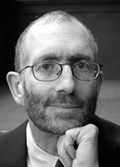 Daniel Levitan, the author of The Craft of Piano Tuning and the former tuning editor of The
Piano Technicians Journal, is best known for his groundbreaking research into inharmonicity, his insightful approach to the mechanics of tuning, and his innovative tuning hammer designs. A graduate of the North Bennet Street School (1975), he works as a field piano service technician in New York City.
Daniel Levitan, the author of The Craft of Piano Tuning and the former tuning editor of The
Piano Technicians Journal, is best known for his groundbreaking research into inharmonicity, his insightful approach to the mechanics of tuning, and his innovative tuning hammer designs. A graduate of the North Bennet Street School (1975), he works as a field piano service technician in New York City.
This class offers suggestions for improving voicing by learning to listen--not only to pianos, but also to our colleagues and to pianists. It also offers critiques of some of the more common ways of modeling the interactions of the hammer and the string, an alternative way of understanding how the hammer functions, and some new needling techniques.
 Alan Eder
Alan Eder Delwin
D Fandrich, piano designer and builder, has been actively involved in the piano
industry since the early 1960s and an active member of the Piano Technicians
Guild since 1972. Fandrich worked as service manager for Oregon’s largest
Steinway dealer, a position bringing him in contact with a variety of the major
touring concert pianists. Increasingly dissatisfied with the performance of
most new pianos of the time, he began studying piano design and manufacturing
techniques, ultimately becoming Director of Piano Research and Development
for the Baldwin Piano & Organ Company. In 1989 he became America’s
only independent design and manufacturing consultant at the time. He designed
and manufactured the 48” Fandrich Vertical Piano, which was labeled “revolutionary” by
Larry Fine in The Piano Book, third edition. Utilizing his patented soundboard
system, this piano has been called one of the best vertical pianos of its size
ever built. Fandrich has written extensively on the subjects of piano design,
manufacture, and acoustics including a long-running series of articles for
the Piano Technicians Journal, “The Designer’s Notebook.” Fandrich
lectures extensively on piano technology and design topics in the U.S., Europe,
Australia, and China. Over the past two year Fandrich has been working with
Young Chang redesigning their entire product line and refining their manufacturing
systems to improve build quality and performance consistency. Fandrich also
designs and remanufactures pianos at his plant in Centralia, Washington. www.fandrichpiano.com
Delwin
D Fandrich, piano designer and builder, has been actively involved in the piano
industry since the early 1960s and an active member of the Piano Technicians
Guild since 1972. Fandrich worked as service manager for Oregon’s largest
Steinway dealer, a position bringing him in contact with a variety of the major
touring concert pianists. Increasingly dissatisfied with the performance of
most new pianos of the time, he began studying piano design and manufacturing
techniques, ultimately becoming Director of Piano Research and Development
for the Baldwin Piano & Organ Company. In 1989 he became America’s
only independent design and manufacturing consultant at the time. He designed
and manufactured the 48” Fandrich Vertical Piano, which was labeled “revolutionary” by
Larry Fine in The Piano Book, third edition. Utilizing his patented soundboard
system, this piano has been called one of the best vertical pianos of its size
ever built. Fandrich has written extensively on the subjects of piano design,
manufacture, and acoustics including a long-running series of articles for
the Piano Technicians Journal, “The Designer’s Notebook.” Fandrich
lectures extensively on piano technology and design topics in the U.S., Europe,
Australia, and China. Over the past two year Fandrich has been working with
Young Chang redesigning their entire product line and refining their manufacturing
systems to improve build quality and performance consistency. Fandrich also
designs and remanufactures pianos at his plant in Centralia, Washington. www.fandrichpiano.com Ray
is a second generation piano hammer maker, following in the footsteps of his
father, Marty Negron, who was co-founder of Ronsen Piano Hammer Co. as well
as former manager at Pfriemer Piano Hammer Co. Ray started working summers
at Ronsen in 1961, and has been working full time since 1971, becoming company
president in 1983. Ray is always looking to learn more about piano hammers,
and enjoys talking with piano technicians regarding hammers, but will always
find time for a conversation about baseball.
Ray
is a second generation piano hammer maker, following in the footsteps of his
father, Marty Negron, who was co-founder of Ronsen Piano Hammer Co. as well
as former manager at Pfriemer Piano Hammer Co. Ray started working summers
at Ronsen in 1961, and has been working full time since 1971, becoming company
president in 1983. Ray is always looking to learn more about piano hammers,
and enjoys talking with piano technicians regarding hammers, but will always
find time for a conversation about baseball.  Dale is a second-generation piano technician. His father, Harold, received training
from the venerable William Braid White in 1950. Belonging to a deeply musical
family prepared Dale for a career in custom piano restoration and rebuilding.
His wife Trix and son Dennis work together with Dale at the family business,
Erwin's Piano Restorations in Modesto, California.
Dale is a second-generation piano technician. His father, Harold, received training
from the venerable William Braid White in 1950. Belonging to a deeply musical
family prepared Dale for a career in custom piano restoration and rebuilding.
His wife Trix and son Dennis work together with Dale at the family business,
Erwin's Piano Restorations in Modesto, California. Jack
is a master felt maker in his own rite. His family owns three felt factories,
including the Wurzen Felt Co., Germany, formerly the legendary J.D Weickert
felt factory. This factory is the oldest felt making facility in the world.
The hammer felts and other felts are produced combining Jack's vast expertise
with original J.D. Weickert felt formulas passed on to him in 1992 when the
family purchased the plant in Wurzen. Jack's passion is making piano felts,
especially hammer top felt. He is the piano technician's best ally and is ever
trying to improve the product.
Jack
is a master felt maker in his own rite. His family owns three felt factories,
including the Wurzen Felt Co., Germany, formerly the legendary J.D Weickert
felt factory. This factory is the oldest felt making facility in the world.
The hammer felts and other felts are produced combining Jack's vast expertise
with original J.D. Weickert felt formulas passed on to him in 1992 when the
family purchased the plant in Wurzen. Jack's passion is making piano felts,
especially hammer top felt. He is the piano technician's best ally and is ever
trying to improve the product. Starr
Taylor has been tuning and rebuilding pianos since 1985. He studied aural
piano tuning with Andrew Snowden from 1985-1987 and was doing terrible tunings
for the first couple of years. A journeyman machinist, he brings a high tolerance
viewpoint to working with wood. An advocate of Stanwood action protocols and Ronsen
Piano hammers, he strives for a smooth warm tone when installing soundboards. A
guild member since 1988, he is past-president of the local PTG Chapter #337.
Starr
Taylor has been tuning and rebuilding pianos since 1985. He studied aural
piano tuning with Andrew Snowden from 1985-1987 and was doing terrible tunings
for the first couple of years. A journeyman machinist, he brings a high tolerance
viewpoint to working with wood. An advocate of Stanwood action protocols and Ronsen
Piano hammers, he strives for a smooth warm tone when installing soundboards. A
guild member since 1988, he is past-president of the local PTG Chapter #337. David
Love has lived and worked in the San Francisco area for nearly 35 years. His
business focusses on all aspects of piano rebuilding and servicing including
action and soundboard design and installation and concert work. His contributions
on various topics have been published in the PTJ and he is a frequent contributor
to the Pianotech Listserve. In 2011 he was invited by the AIARP (Associazione
Italiana Accordatori Riparatori Pianoforti) to their national convention in
Cavalese, Italy to lecture on piano rebuilding and restoration, theory and
practice.
David
Love has lived and worked in the San Francisco area for nearly 35 years. His
business focusses on all aspects of piano rebuilding and servicing including
action and soundboard design and installation and concert work. His contributions
on various topics have been published in the PTJ and he is a frequent contributor
to the Pianotech Listserve. In 2011 he was invited by the AIARP (Associazione
Italiana Accordatori Riparatori Pianoforti) to their national convention in
Cavalese, Italy to lecture on piano rebuilding and restoration, theory and
practice. Daniel Levitan, the author of The Craft of Piano Tuning and the former tuning editor of The
Piano Technicians Journal, is best known for his groundbreaking research into inharmonicity, his insightful approach to the mechanics of tuning, and his innovative tuning hammer designs. A graduate of the North Bennet Street School (1975), he works as a field piano service technician in New York City.
Daniel Levitan, the author of The Craft of Piano Tuning and the former tuning editor of The
Piano Technicians Journal, is best known for his groundbreaking research into inharmonicity, his insightful approach to the mechanics of tuning, and his innovative tuning hammer designs. A graduate of the North Bennet Street School (1975), he works as a field piano service technician in New York City.